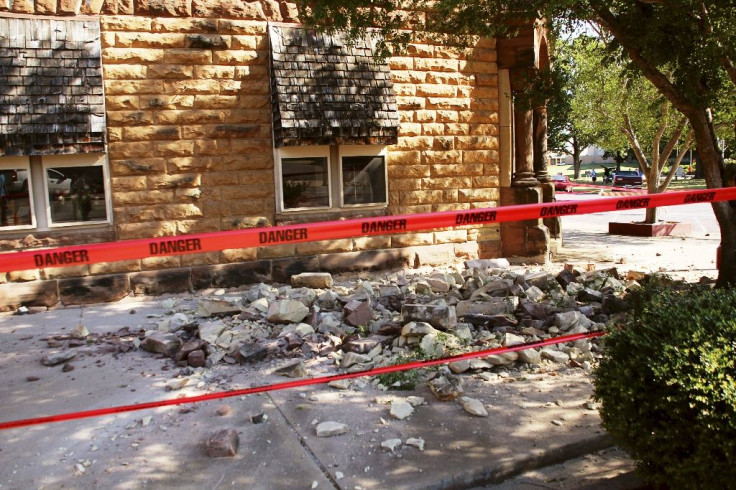Stronger Earthquakes Linked To Oilfield Wastewater Injected Underground, Study Finds

Findings of a new study suggest that oilfield wastewater disposal can contribute to deeper and stronger tremors.
Researchers have long known that pumping fluids deep underground can trigger earthquakes, but in a new study published in the journal Nature Communications on July 16, researchers presented evidence showing that the density of wastewater injected underground is also associated with deeper and stronger earthquakes.
Study researcher Ryan Pollyea, from the Virginia Tech College of Science's Department of Geosciences, and colleagues found that in regions with widespread oilfield wastewater disposal and where injected water has higher density compared with deep naturally occurring fluids, earthquakes are getting deeper at the same rate as the wastewater sinks.
Evidence shows that in Oklahoma and southern Kansas, oilfield wastewater injected underground into the Arbuckle formation are much denser than the natural fluids occurring within the deeper seismogenic zone faults.
This causes a problem because, when wastewater has higher density than naturally occurring fluids, the wastewater sinks and increases fluid pressure deep underground.
The researchers said that pressure changes at depths of at least 5 miles can cause more high-magnitude earthquake regardless if the number of earthquakes that occur is decreasing.
By analyzing earthquake data from across the region of northern Oklahoma and southern Kansas, they observed that the number of high magnitude earthquakes is increasing despite decreasing incidents of earthquakes.
The data showed that earthquakes greater than magnitude 4 increased more than 150 percent from 2017 to 2018. The number of earthquakes with a magnitude 2.5 or greater, on the other hand, dropped by 35 percent during the same period.
"In many cases, these earthquakes occur when oilfield wastewater is disposed of by pumping it into deep geologic formations," Pollyea said.
Pollyea explained that when wastewater is injected deep underground, fluid pressure builds up and migrates away from the injection wells, destabilizing faults and causing injection-induced earthquakes. An example of such incident is that damaging 5.8-magnitude earthquake that occurred in Pawnee, Oklahoma In 2016.
The findings could prove helpful to scientists, policy makers and regulators involved in earthquake mitigation measures.
“Results from this study suggest that the density contrast between produced waters and basement fluids is a fundamental component of the risk profile for injection-induced earthquakes during oilfield wastewater disposal in deep geologic formations,” Pollyea and colleagues wrote.
“We hope this study motivates further research into the relationship between fluid properties and injection-induced seismicity.”
© Copyright IBTimes 2024. All rights reserved.





















